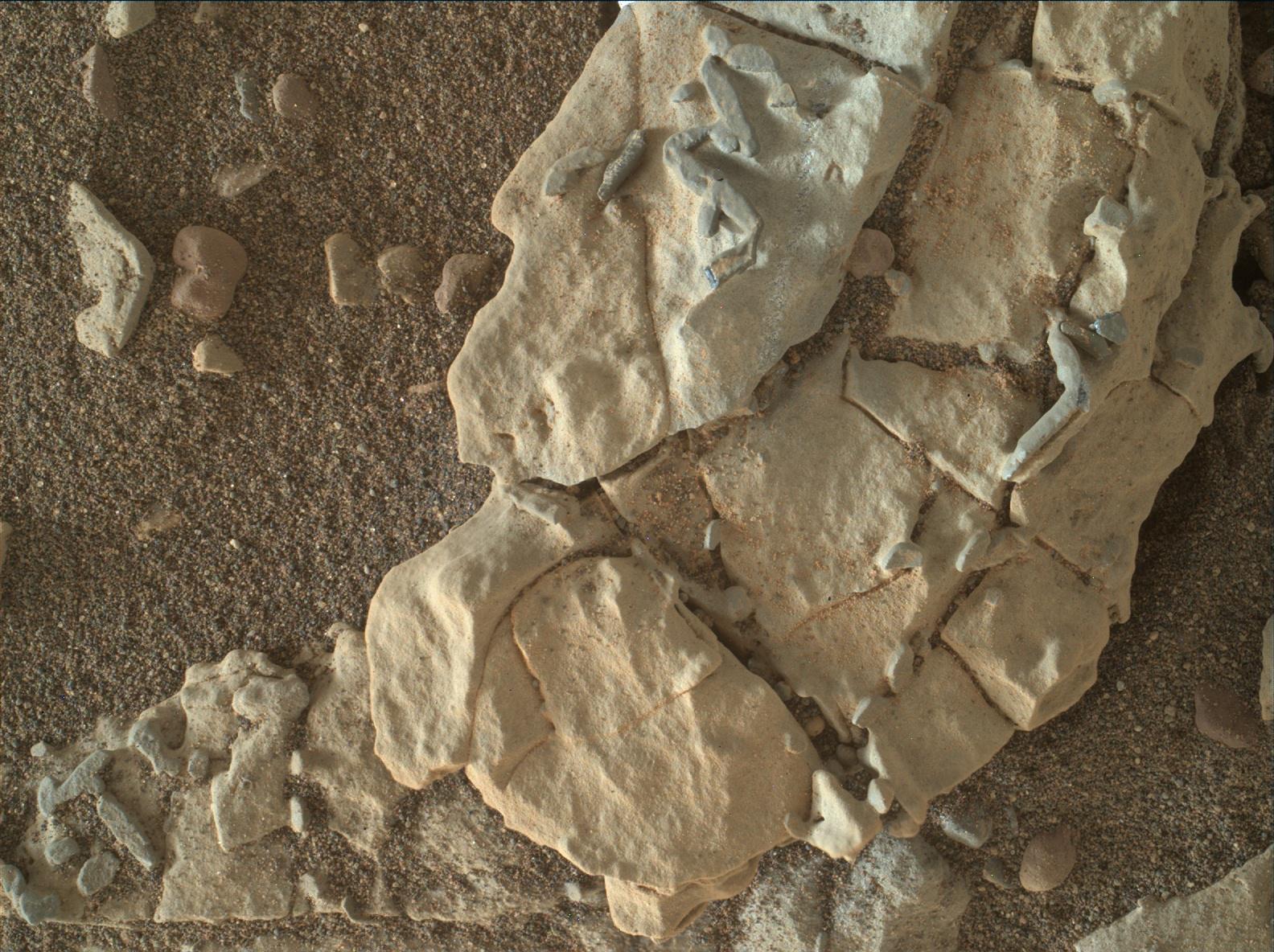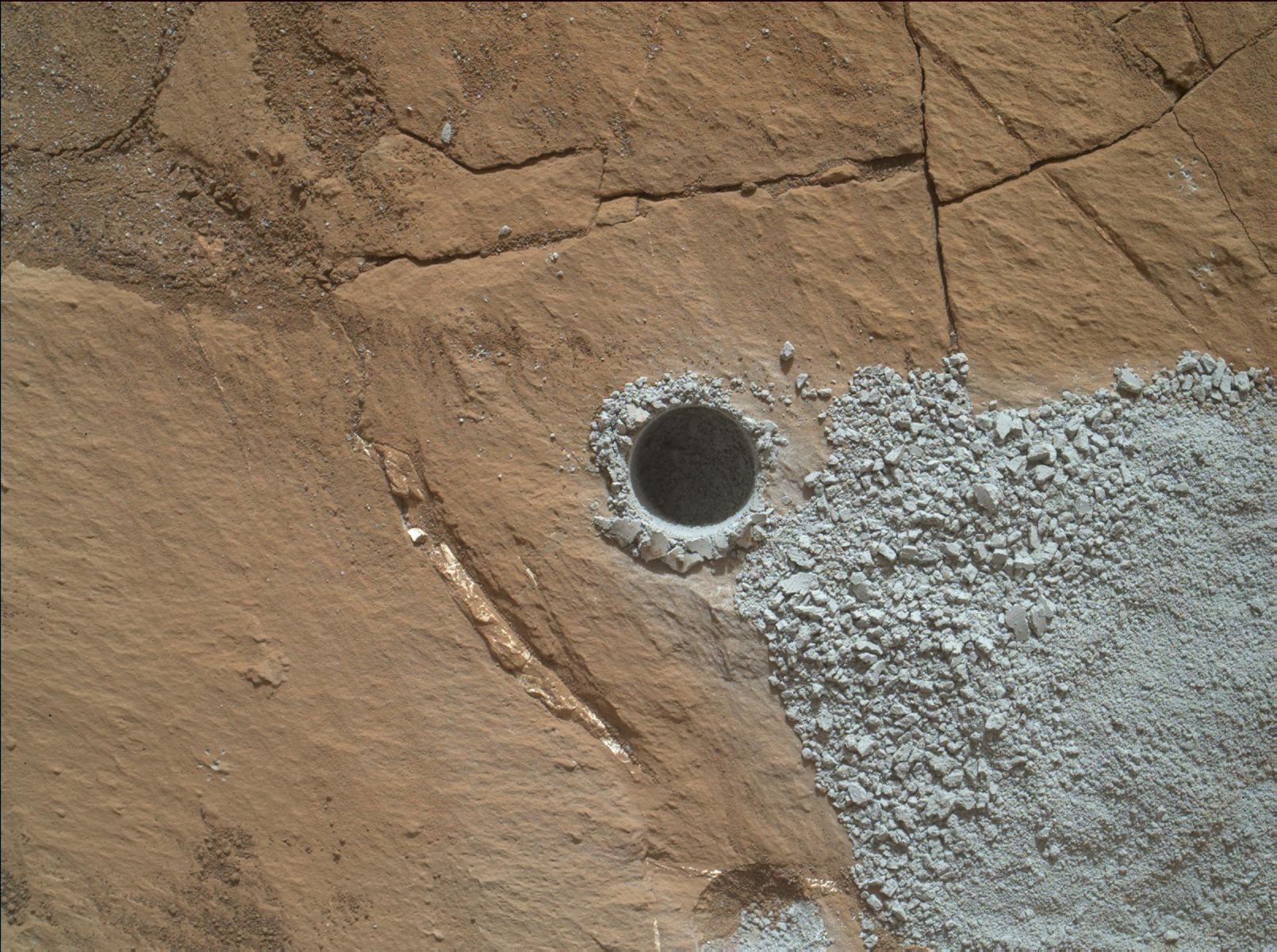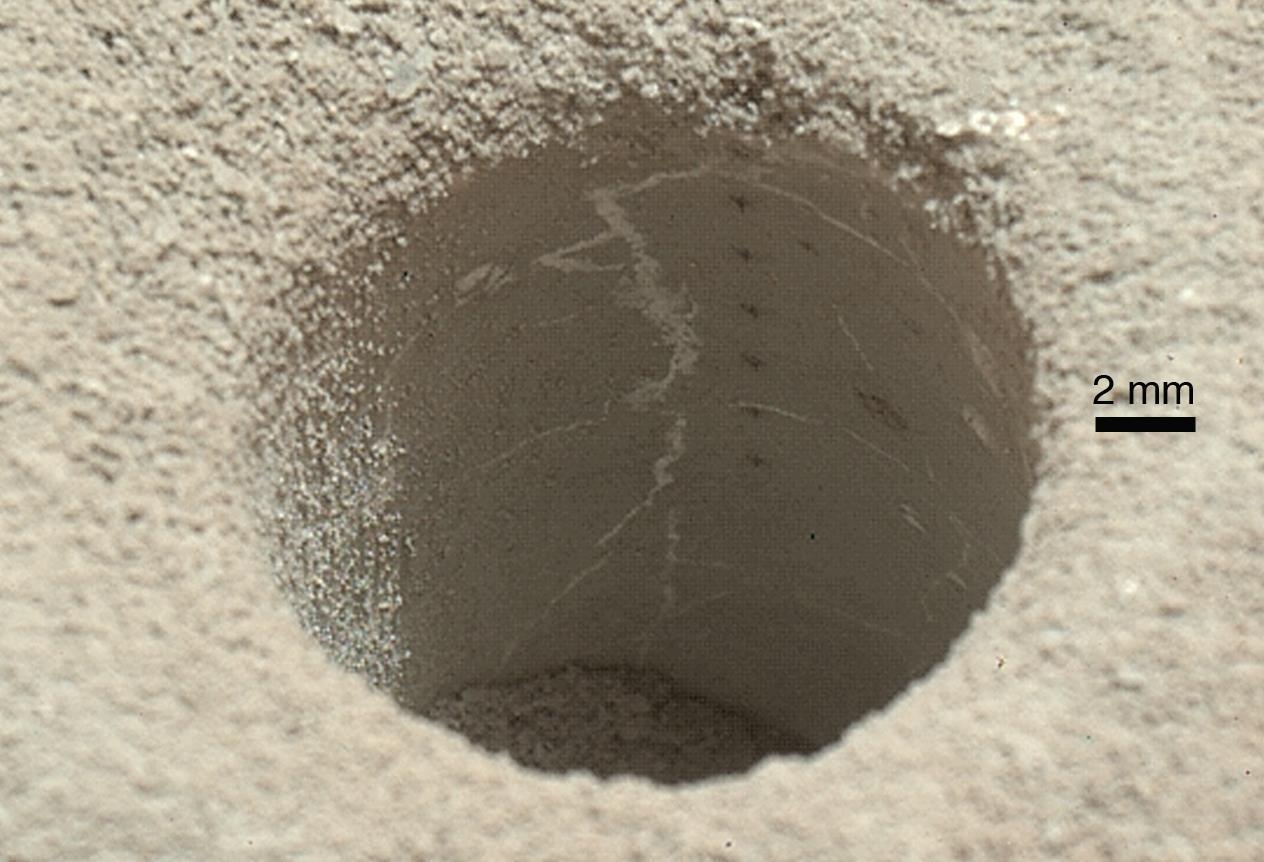Mars Science Laboratory (MSL) Mars Hand Lens Imager (MAHLI)
The Mars Science Laboratory (MSL) Mars Hand Lens Imager (MAHLI) acquires color close-up images of rocks and surface materials in Gale Crater at a range of spatial scales with resolution as high as 13.9 micrometers per pixel.
|
Launch: 26 November 2011 |
Landing: 5 August 2012 |
Camera Status: Fully Operational, Aboard Curiosity Rover on the Surface of Mars |

The MAHLI instrument is used to acquire the popular “rover selfies.” This process takes about 70 individual photos over the course of an hour to capture the entire rover with the MAHLI instrument on the end of Curiosity’s arm.
Image credit: NASA/JPL-Caltech/MSSS
 MAHLI imaging also checks the health and safety of the rover such as imaging the wear and tear on the wheels while driving across sharp Mars rocks for extended periods of time. From MAHLI’s vantage point on the rover’s maneuverable arm, it can perform “hardware checkouts” like this one of the wheels.
MAHLI imaging also checks the health and safety of the rover such as imaging the wear and tear on the wheels while driving across sharp Mars rocks for extended periods of time. From MAHLI’s vantage point on the rover’s maneuverable arm, it can perform “hardware checkouts” like this one of the wheels.
Image credit: NASA/JPL-Caltech/MSSS

However, looking at the rover is not the main use for MAHLI. MAHLI’s primary mission is to be a “Hand Lens Imager” for our geologic investigations, as the name implies. This MAHLI image gives us a closer look at some “stick like features” on Sol 1922 in the Vera Rubin Ridge area of Curiosity’s traverse.
Image credit: NASA/JPL-Caltech/MSSS
 MAHLI also helps us document activities done by other instruments. This MAHLI image shows a drill hole near “Marias Pass” on lower Mount Sharp.
MAHLI also helps us document activities done by other instruments. This MAHLI image shows a drill hole near “Marias Pass” on lower Mount Sharp.
Image credit: NASA/JPL-Caltech/MSSS
 An even closer view of a different drill hole in the Yellowknife Bay area of Gale Crater depicts a vertical line of laser shots from the ChemCam instrument.
An even closer view of a different drill hole in the Yellowknife Bay area of Gale Crater depicts a vertical line of laser shots from the ChemCam instrument.
Image credit: NASA/JPL-Caltech/MSSS

This MAHLI image shows the effect of the Dust Removal Tool (DRT) on a dusty rock in the Vera Rubin Ridge area.
Image credit: NASA/JPL-Caltech/MSSS
| NASA/JPL Mars Exploration Home Page | NASA/JPL Mars Science Laboratory Home Page |




